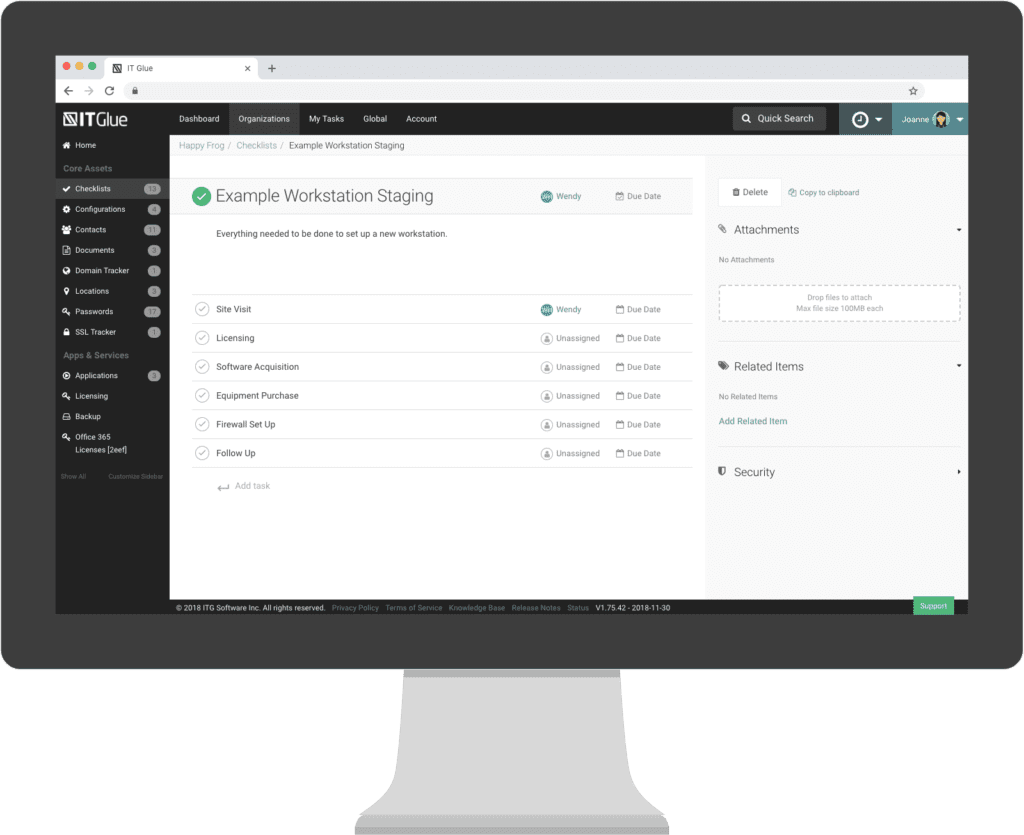Checklists
View Our Demo

Guarantee service consistency, standardize your team’s processes and track the progress of critical tasks with IT Glue Checklists. Easily get started with out-of-the-box myITchecklist templates that are based on TruMethod’s industry-approved framework, so you don’t need an advanced IT team to build out business processes. Edit, copy and reuse Checklist Templates and Checklists so you can easily replicate recurring processes while also being able to customize them according to organization-specific unique requirements.
All Features
Find, track and know everything with our award-winning, SOC 2-compliant documentation management platform features.




















